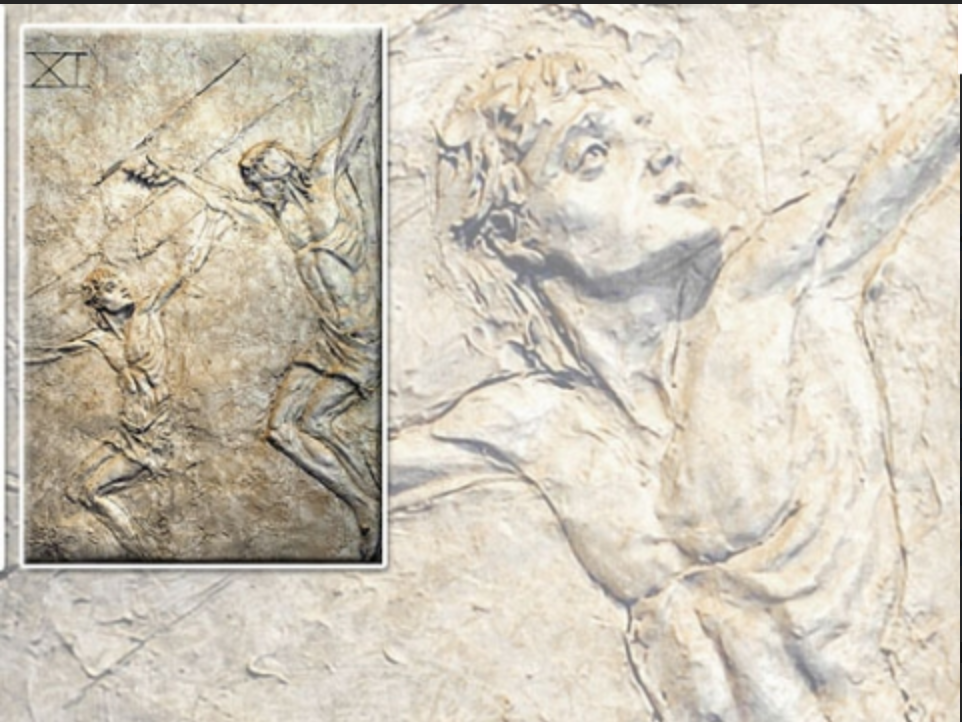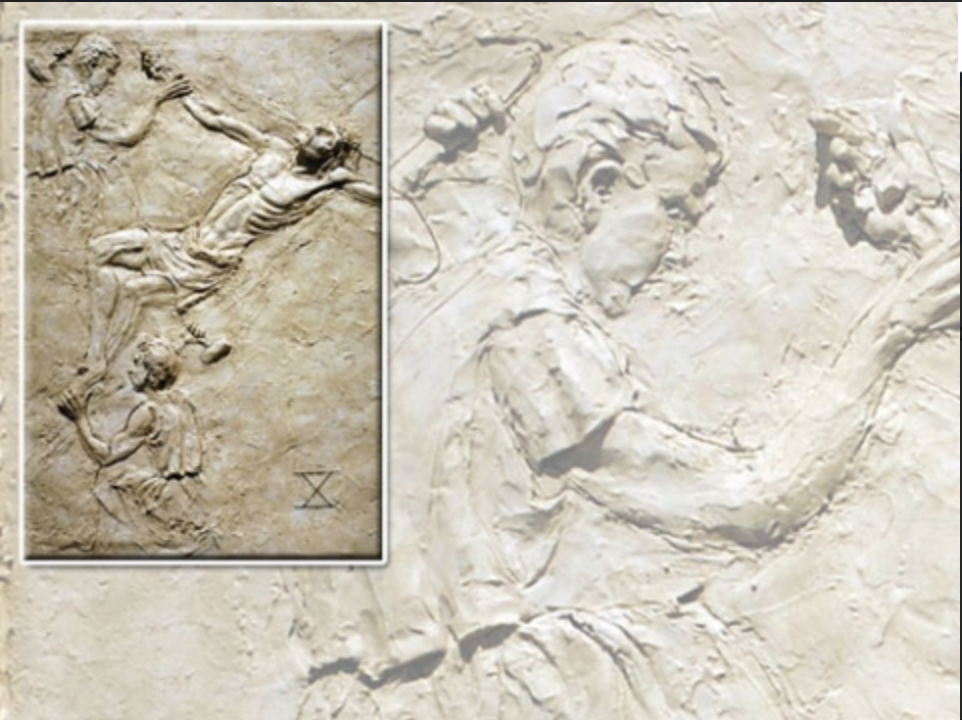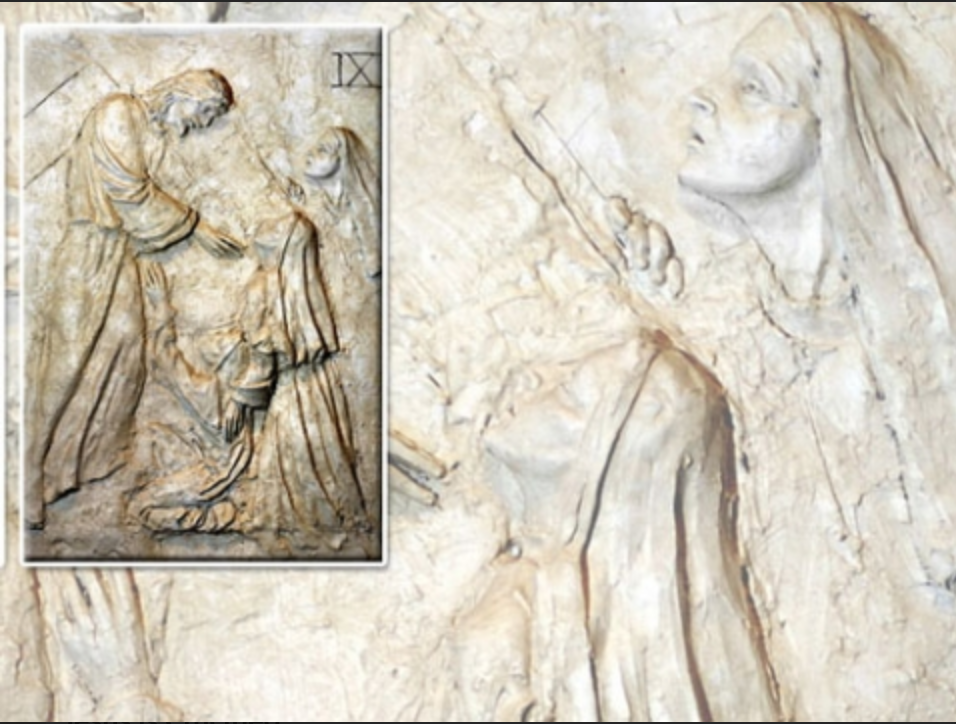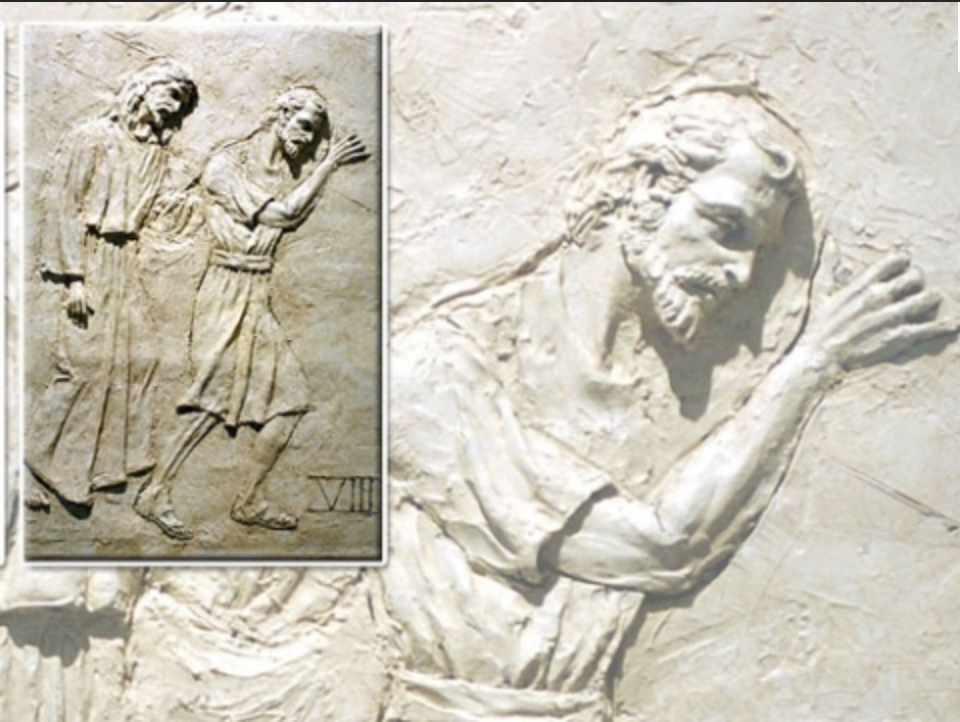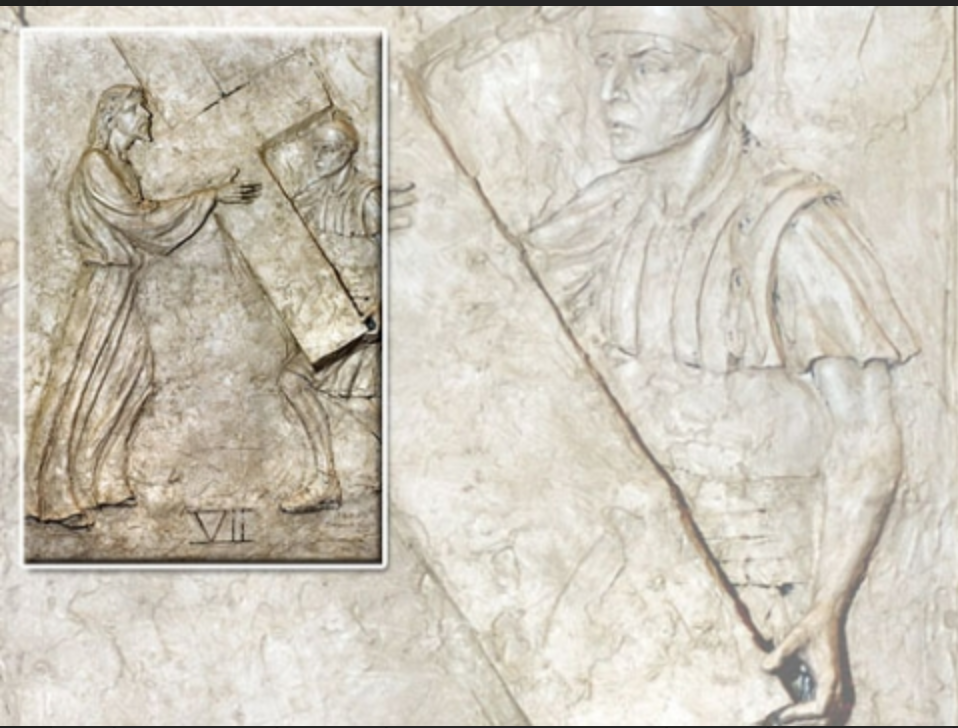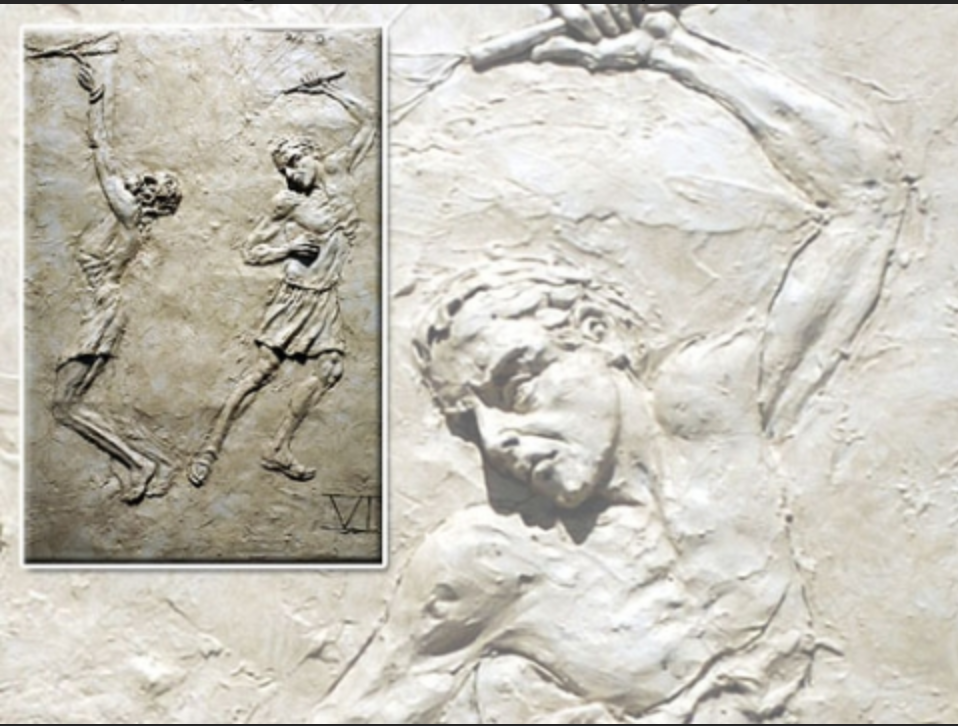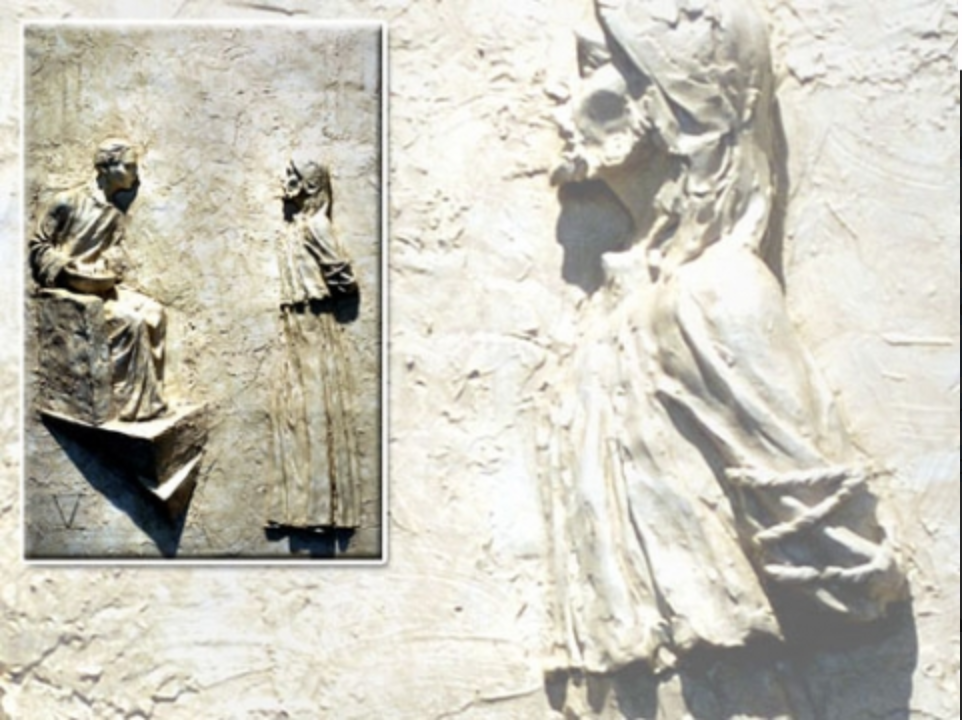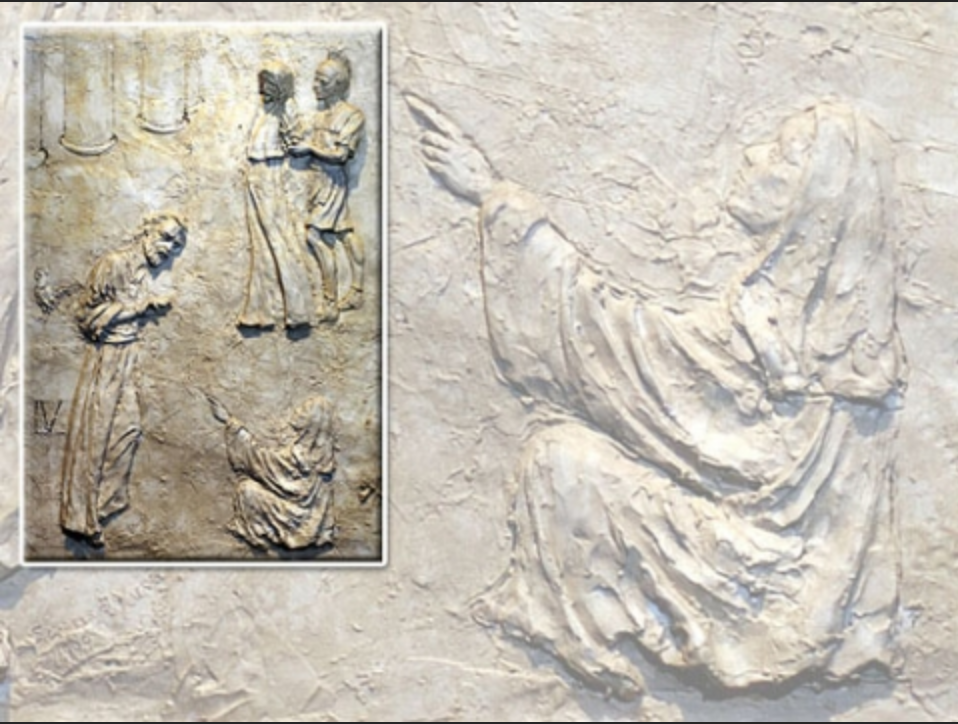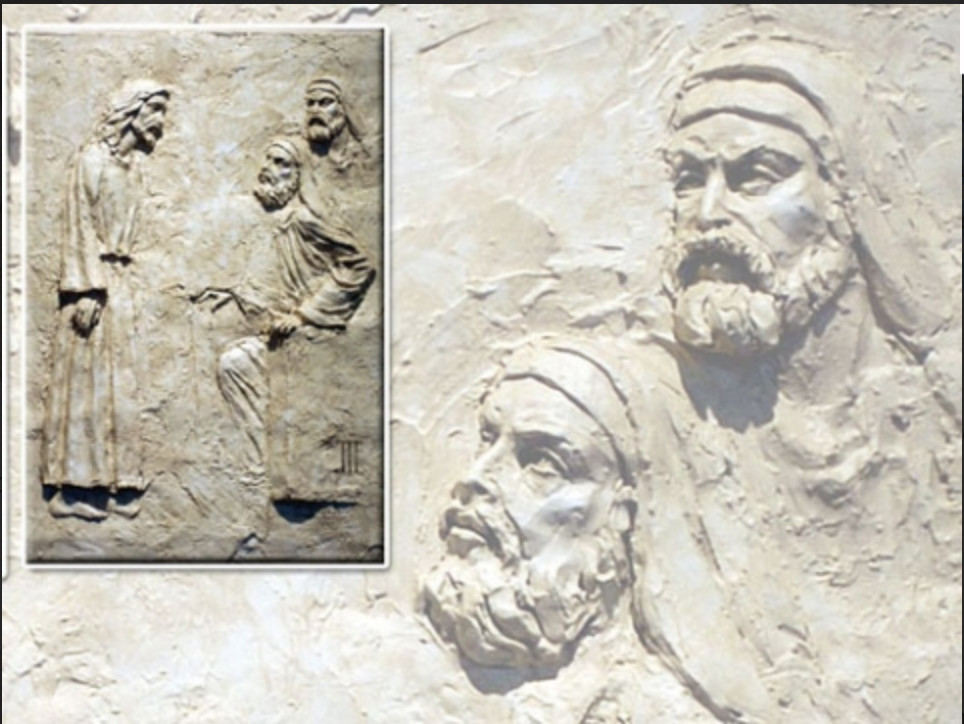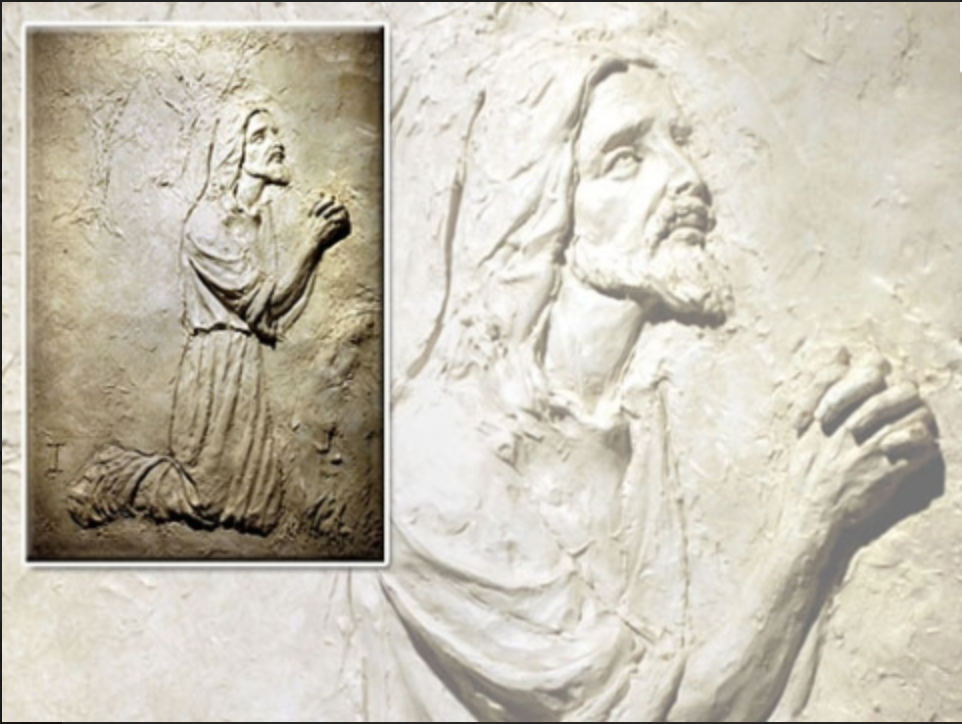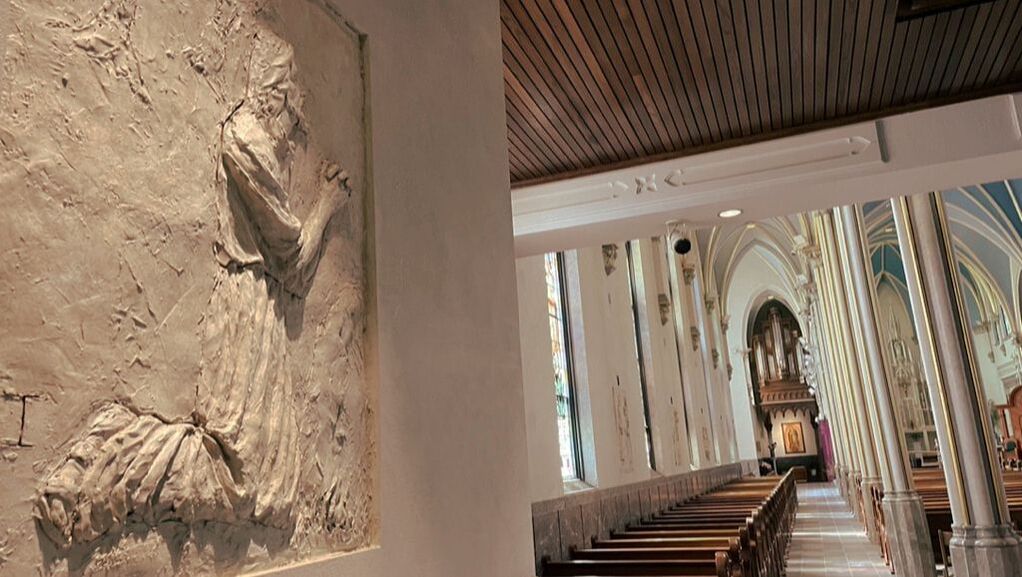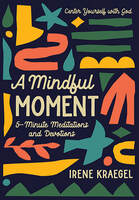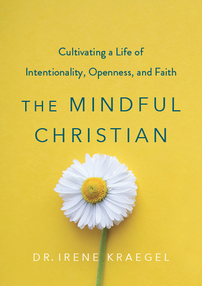Now one of the criminals hanging there reviled Jesus, saying, “Are you not the Messiah? Save yourself and us.” The other, however, rebuking him, said in reply, “Have you no fear of God, for you are subject to the same condemnation? And indeed, we have been condemned justly, for the sentence we received corresponds to our crimes, but this man has done nothing criminal.” Then he said, “Jesus, remember me when you come into your kingdom.” He replied to him, “Amen, I say to you, today you will be with me in Paradise." (This post is part of a Lenten series on praying the Stations of the Cross - a devotional practice that is said to have started with Mary after the death and resurrection of Jesus. To start at the beginning, see the overview provided on March 5, 2023, and then go from there!) Reflection These criminals are guilt looking at absolution personified, and the second criminal understood that. Was he the luckiest sinner in the world, crucified next to the savior of the world who was forgiving the whole world in that very moment? We are all the luckiest sinners. It’s almost always a temptation to lash out with sarcasm when we're suffering, to mock those we thought would help us in a particular way, and that's what the first criminal did. Helping professionals like me know what it’s like to be on the receiving end of patients’ sarcastic lashing out when there is no magic wand to make their suffering instantly vanish. We all know what it’s like to feel disappointed and angry when things don’t seem to be getting better in the particular way we wanted. So yes, it can be hard to see the salvation we need in the midst of suffering, even when it is right in front of us, because we're angry. How did the second thief manage to see Jesus' divine salvation, hanging on the cross next to him? Somehow, he had cultivated the readiness to receive God’s goodness in the hour that he needed it most. In the Parable of the Sower, this man was the one with good soil, ready to receive God's word, despite the thieving ways that got him crucified. Do the consequences of our sin sometimes get us stuck next to Jesus, the only One we need in that moment to free our souls? Freedom for this thief, stuck next to Jesus, was not about being let off the hook or relieved of his suffering. For him and for us, freedom is about recognizing Jesus and asking him for what we need – intimate relationship with God as we participate in his eternal Kingdom. Cultivating good soil, ready to receive forgiveness when it is offered. A note about mindfulness Mindfulness helps me recognize the good that is right in front of me, even when I am pulled toward sarcastic rejection of what seems too painful or disappointing to bear. It helps me take the long view, noticing what is in the moment while also noticing that it is not the whole picture. All of this can expand my ability to see beyond my pain to also see God who loves me, creating freedom from the tyranny of self-obsession, opening up space for intimate connection with God. (For a list of mindfulness practices that can help reduce self-obsession and sarcastic resistance to the moment, check out the Guides for Practice available here.)
0 Comments
When they came to the place called the Skull, they crucified him and the criminals there, one on his right, the other on his left. Then Jesus said, “Father, forgive them, they know not what they do.” (This post is part of a Lenten series on praying the Stations of the Cross - a devotional practice that is said to have started with Mary after the death and resurrection of Jesus. To start at the beginning, see the overview provided on March 5, 2023, and then go from there!) Reflection This is the most-feared moment, and there is no escaping the excruciating pain, nor does Jesus try to escape. He has entered this place that sounds like hell on earth – “the Skull” – and centered himself between two criminals to share in their horror of death by crucifixion. Somehow, he still exudes love here, not anger. He is bringing forgiveness to the whole world and literally to these guilty men on either side of him, bringing ultimate forgiveness into this physical place of ultimate punishment for the crimes of humanity. In the artist's portrayal of Station X, the men conscripted into carrying out this violent act of crucifixion appear tragic to me. What did they feel as they hammered nails through flesh and bone? Did they suspect this was God-as-man? Did their hearts hear any whisper of God? They come across as small and vulnerable, and I can see and feel why Jesus spoke forgiveness over them, even in their moment of violence. They were following orders, and they didn’t know. It makes me wonder when have I caused God pain, thinking I was doing right, and God spoke forgiveness over me, even in the moment of his pain at my hands? This moment of sacrifice changed everything. The reach of Jesus’ arms stretched out on his cross is so wide, and looking at the artwork of this Station, I can feel how wide and all-encompassing is this act of love as he reaches directly down through the ages to us. The sins of those around him, including those crucifying him, have no eternal relevance. God’s wide plan can never be stopped by our deeply misguided confusion. God saved us through vulnerability on full display. There is nothing Instagramable about this moment, this authenticity, this pain, this love. God went all-in. Jesus was still talking with his Father at this moment of steel ripping through flesh, still rooted in that relationship, just as we saw way back in the Garden of Gethsemene (Station I). He was keeping the conversation going. When I am harmed by those around me (as was Jesus), this is an opportunity to love and forgive (as Jesus did). The only way to do that is to keep the conversation going with the Father. A note about mindfulness Forgiving those who harm us requires us to see beyond our (real) experience of pain to also see the humanity of those who have harmed us. Recognizing our common vulnerability, confusion, and need for compassion, we have the opportunity to honor our own emotions while also releasing our grip on anger toward others. Mindfulness practices help us see this common humanity, with particular power in Lovingkindness practices to expand our vision beyond ourselves. Forgiveness doesn’t mean we always stay in relationship with those who have harmed us (particularly in cases of abuse and violence), but it does mean we take God up on the offer to be set free from our own bitterness and thirst for revenge. (For a list of mindfulness practices that help recognize our common humanity, check out the Guides for Practice available here.) A large crowd of people followed Jesus, including many women who mourned and lamented him. Jesus turned to them and said, 'Daughters of Jerusalem, do not weep for me; weep instead for yourselves and for your children, for indeed, the days are coming when people will say, ‘Blessed are the barren, the wombs that never bore and the breasts that never nursed.' At that time, people will say to the mountains, ‘Fall upon us!' and to the hills, ‘Cover us!' for if these things are done when the wood is green what will happen when it is dry? (This post is part of a Lenten series on praying the Stations of the Cross - a devotional practice that is said to have started with Mary after the death and resurrection of Jesus. To start at the beginning, see the overview provided on March 5, 2023, and then go from there!) Reflection In a noisy crowd of persecutors, in his time of deep suffering and fatigue on the way to the cross, Jesus saw grieving women – and he linked his suffering with theirs. There is no blustery talk here about revolution or revenge or retaliation, no lashing out with threats, no posturing, no false promises. Instead, Jesus is authentic and honest about the chronicity of grief, and it is the authentic emotion of the women in the crowd that draws his attention. Without trying to fix it, he names their shared cycle of heartbreak in the face of seemingly nonsensical trauma. There is an intimacy in this image, Jesus sharing grief with the women. It reminds me of when he wept with Mary of Bethany, just before he raised her brother Lazarus from the dead – he weeps with those who weep, even when he knows better things are to come. Jesus seems to know women can handle this kind of authenticity, and he’s not afraid to be real with them. He even knows they can handle the naming of future suffering, acknowledging that life is hard (past, present, and future) and there is no way around that. Even with Jesus, the reality of life includes suffering and grief, and these women already knew that deep in their bones by virtue of the time and place in which they lived. His authenticity is validating of their emotional experience. Relational connections are at the heart of Jesus’ words here. He speaks to the women together as a group. He calls them “daughters of Jerusalem,” acknowledging their deep family ties to their people and to the city in which they live. He names their care for their children. This passage reminds me that when the going gets tough, that’s the time to circle up around Jesus. Be in community. Express authentic emotion. Allow Jesus to turn toward you in the intimacy and validation of shared grief. He’s not afraid of what is difficult, and he walks with you in solidarity. Also, you might want to keep your eyes out for some authentic women to show you the way. A note about mindfulness When cycles of heartbreak are crashing like waves, we need to grieve. Pressures from the world can lead us to think we need to be strong and defiant in times of suffering. Mindfulness practices help us cultivate a less blustery relationship with suffering, encouraging non-judgmental connection with whatever our emotions are, just as Jesus did with the women of Jerusalem. (For a list of mindfulness practices that support nonjudgmental connection with your emotions as you pray the Stations of the Cross, check out the Guides for Practice available here.) They pressed into service a passer-by, Simon, a Cyrenian, who was coming in from the country, the father of Alexander and Rufus, to carry his cross. (This post is part of a Lenten series on praying the Stations of the Cross - a devotional practice that is said to have started with Mary after the death and resurrection of Jesus. To start at the beginning, see the overview provided on March 5, 2023, and then go from there!)
Reflection Even Jesus accepted help at the moment of his greatest need. Who are we to refuse it? Jesus is our model of receiving what we need without resistance. Does Simon also represent us, called into participation in God’s suffering? He was the father of two boys (was he thinking of them in this moment?), traveling in from the country (for what purpose?). This unexpected calling on him was deeply individual, personal, and unique, and our callings are the same. We never know when God will draw us from our daily life of family/travel/community into very particular service to him and to the rest of the world. Simon as a “stranger” got to participate directly in God’s redemption of the world in a way that those closest to Jesus missed out on. (Did the disciples later have to mourn their absence in these most vulnerable and intimate moments endured by their dearest friend?) Perhaps Simon’s call was a symbol of God’s sacred story being widened to the Gentiles, who would soon receive the torch of God’s flame and pass it throughout all the world. A note about mindfulness Silence helps us to hear the call of God in our lives. It also helps us to “show up” and stay present when those we care about need our help, and it can help us notice when we’re resisting the help that God is sending our way through the people around us. Mindfulness practices are one way to use silence for better listening, noticing, and presence, benefiting both ourselves and those God places in our path. (For a list of mindfulness practices that help you use the silence well as you pray the Stations of the Cross, check out the Guides for Practice available here.) When the chief priests and the guards saw Jesus, they cried out, 'Crucify him, crucify him!' Pilate said to them, 'Take him yourselves and crucify him. I find no guilt in him.' ... They cried out, 'Take him away, take him away! Crucify him!' Pilate said to them, 'Shall I crucify your king?' The chief priests answered, 'We have no king but Caesar.' Then he handed him over to them to be crucified. So they took Jesus, and carrying the cross himself he went out to what is called the Place of the Skull, in Hebrew, Golgotha." (This post is part of a Lenten series on praying the Stations of the Cross - a devotional practice that is said to have started with Mary after the death and resurrection of Jesus. To start at the beginning, see the overview provided on March 5, 2023, and then go from there!) Reflection There is deep fatigue at this point in Jesus’ journey to the cross. Jesus is so alone – exhausted, in excruciating pain, completely abandoned, and appearing as a failure in the eyes of the crowds who taunt him. Being asked to carry his own instrument of torture feels like way too much after everything he has already been through. Why (and how) did he keep going? Apparently, his mission to redeem the world (us) was so deep in his bones and spirit that he was sustained through any temptation to crumble physically and mentally at this midway point in his grueling ordeal. He was still plugged into the Father, sustained by the prayers offered through his years of ministry and through the previous night (at the Last Supper and in the Garden of Gethsemane). “I and my Father are one,” he had said. We have access to this same fount of strength as we endure life’s sufferings, invited to remain in Christ (who is in the Father) as he remains in us. “Remain in me as I remain in the Father.” God gives us what we need to hold on through our darkest hours, even when the fatigue is deep. And resurrection is on the way. The human powers-that-be are again showing their ugly side here at Station VII, carrying out violence on those they are meant to protect. Where do today’s powers-that-be (in both the church and in secular institutions) continue to impose burdens too heavy to bear on those already suffering? When are we blinded to truth and to God because of our power and aggression? A note about mindfulness Mindfulness practices help us become aware of our full experience – both the fatigue and also the hidden strengths that we might have forgotten we had. We can use mindfulness meditations to dive beneath the surface of our difficult thoughts, feelings, and physical sensations, experiencing the deeper waters of sustenance from God. We don’t have to enjoy the pain, but knowing there’s more to the present moment (with resurrection on the way) makes all the difference. (For a list of mindfulness practices that open you up to your full present-moment experience as you pray the Stations of the Cross, check out the Guides for Practice available here.) Then Pilate took Jesus and had him scourged. And the soldiers wove a crown out of thorns and placed it on his head, and clothed him in a purple cloak, and they came to him and said, 'Hail, King of the Jews!' And they struck him repeatedly. (This post is part of a Lenten series on praying the Stations of the Cross - a devotional practice that is said to have started with Mary after the death and resurrection of Jesus. To start at the beginning, see the overview provided on March 5, 2023, and then go from there!)
Reflection God used Christ’s suffering, pain, and rejection as an avenue for great redemption, love, and cleansing. He aims to do the same with our pain. Our inevitable earthly sufferings are a built-in invitation to union with Christ and participation in something heavenly. The glory to come didn’t take away from the intensity of Jesus’ suffering. He had even asked for this “cup” to be removed. God often doesn’t give us a way around the pain, only through. But he does promise that suffering is never the whole picture, even when it feels all-consuming. The stuckness of our bodies (or emotions) when we’re bound up (like Jesus at the scourging post) does not limit the movement of our spirits. Jesus was an advocate for peace, and he was still a victim of murder. Pursuing goodness is not an avenue of self-protection or controlling others who act out of violence. It is, instead, an avenue of sustenance from God through all things. A note about mindfulness Mindfulness practices help us develop a less resistant relationship to our pain so that we do not add to our suffering by beating our heads against the wall of reality. Accepting what is already here provides a pathway for God’s redemptive work in the midst of the pain. It won’t last forever, and we can know that God is working good things within us - even when we wish, like Jesus, that there was a way to get there that went around (instead of through) the suffering. (For a list of mindfulness practices that help you stay present to yourself and God in the midst of difficulty as you pray the Stations of the Cross, check out the Guides for Practice available here.) The chief priests with the elders and the scribes, that is, the whole Sanhedrin, held a council. They bound Jesus, led him away, and handed him over to Pilate. Pilate questioned him, 'Are you the king of the Jews?' He said to him in reply, 'You say so.' The chief priests accused him of many things. Again Pilate questioned him, 'Have you no answer? See how many things they accuse you of.' Jesus gave him no further answer, so that Pilate was amazed.... Pilate, wishing to satisfy the crowd, released Barrabas... [and] handed [Jesus] over to be crucified. (This post is part of a Lenten series on praying the Stations of the Cross - a devotional practice that is said to have started with Mary after the death and resurrection of Jesus. To start at the beginning, see the overview provided on March 5, 2023, and then go from there!) Reflection Jesus’ power is silent and strong, dignified and stable, never aggressive or pushy. He waits for humans to seek truth and see him. He never forces. Even standing before Pilate, Jesus is offering something to him. He remains fully present in this scene, knowing he has what Pilate needs. He is available and ready to be found. Pilate is hedging his bets here, deeply conflicted, much like Peter in the last station. He has this urge to be “clean,” leading him to a symbolic washing of his hands as he sends Jesus to die. This is reflective of themes throughout humanity’s relationship with God. We know we need cleansing from our violence-driven and power-hungry ways – God provided practices for cleansing throughout Old Testament history in response to our patterns of sin. Jesus, standing before Pilate, was about to offer his own blood as a more permanent cleansing for both him and for all the rest of us. Pilate is all of us, longing to be right, safe, praised, accepted, cleansed of our mistakes, in power – and also confused and not always ready to see God in front of us amidst the noise of the crowd. As with Pilate, our seats of power and privilege remove us from the place where our deepest needs are met – at the feet of Jesus. Jesus is not bothered by our confusion, our missteps, or our flailing. He remains ready and present, standing before us in dignified quiet until we can finally see him before us as Savior and God. A note about mindfulness It is rare that we truly see what is right in front of us, given our chronic mental clutter. With templates from past experiences and anxieties about future experiences jumping around our brains, it’s not uncommon to miss out on what the present moment has to offer. Mindfulness practices can help us engage with what is present right now, and this is an important step whenever Jesus is before us, waiting for us to see him. When I become more aware through mindfulness, I have an opportunity to expand beyond conflicted and confusing thoughts (driven by the demands of the crowds) in order to see the simplified and dignified truth of salvation (provided by Jesus). (For a list of mindfulness practices that help clear your sight to see what Jesus provides as you pray the Stations of the Cross, check out the Guides for Practice available here.) Now Peter was sitting outside in the courtyard. One of the maids came over to him and said, "You too were with Jesus the Galilean." But he denied it in front of everyone, saying, "I do not know what you are talking about!" As he went out to the gate, another girl saw him and said to those who were there, "This man was with Jesus the Nazarean." Again he denied it with an oath, "I do not know the man!" A little later the bystanders came over and said to Peter, "Surely you too are one of them; even your speech gives you away." At that he began to curse and to swear, "I do not know the man." And immediately a cock crowed. Then Peter remembered the word that Jesus had spoken: "Before the cock crows you will deny me three times." He went out and began to weep bitterly. (This post is part of a Lenten series on praying the Stations of the Cross - a devotional practice that is said to have started with Mary after the death and resurrection of Jesus. To start at the beginning, see the overview provided on March 5, 2023, and then go from there!) Reflection Fear can lead us astray. Peter was focused here on avoiding pain and death – an understandable reaction under the circumstances. But his rational fear kept him from seeing the full picture, and it kept him from following Jesus (the safest person in this situation) wholeheartedly. He was more focused on short-term avoidance of pain than on long-term connection with God. It can be challenging to stay with people in their time of weakness and struggle, and perhaps this was another part of the difficulty for Peter here. He couldn’t rescue Jesus, and just staying present to a suffering friend (without being able to fix the problem at hand) was really uncomfortable. So he lied and ran. He failed the test of friendship. Amazingly, there is no sign of shaming by Jesus in this moment, and we know that Peter was later offered full reconciliation and restoration by Jesus (John 21). I’m curious about the women in this scene – the truth-tellers. What led them to call Peter out as being with Jesus? Perhaps they were more free to name the truth because their gender kept them outside of the power structure – there wasn’t much for them to lose in the situation? Perhaps they were more oriented to relationship, connection, & open communication than the men in the scene? Or perhaps they were just more curious? A note about mindfulness Mindfulness helps to create a bit of observational distance from our instinctive emotional reactions (like fear) so that we can see more clearly. We practice feeling our emotions without resistance, while at the same time pausing our auto-pilot reactions to them. Then we can respond to the circumstance with more intentionality, keeping our behavior in alignment with our values no matter what we are feeling emotionally in the moment. (For a list of mindfulness practices that help practice healthy observational distance from your emotions as you pray the Stations of the Cross, check out the Guides for Practice available here.) "When day came the council of elders of the people met, both chief priests and scribes, and they brought him before their Sanhedrin. They said, 'If you are the Messiah, tell us,' but he replied to them, 'If I tell you, you will not believe, and if I question, you will not respond. But from this time on the Son of Man will be seated at the right hand of the power of God.' They all asked, 'Are you then the Son of God?' He replied to them, 'You say that I am.' Then they said, 'What further need have we for testimony? We have heard it from his own mouth.'" (This post is part of a Lenten series on praying the Stations of the Cross - a devotional practice that is said to have started with Mary after the death and resurrection of Jesus. To start at the beginning, see the overview provided on March 5, 2023, and then go from there!) Reflection The seat of power has a hardness and a glare toward what is different. And God’s message is different. Power as practiced by humans is unlikely to look at the way of Christ with softness. Jesus catches the full glare of the religious establishment in this moment. It is folly on their part, thinking they can override God’s power. How like us all (especially among the religiously powerful?), the folly of trying to control rather than follow Jesus. Jesus somehow looks both vulnerable and dignified in the artistic portrayal at this station. He knows he is God, and the dignity of who he is shines forth, even when the powerful are trying to demean him. He doesn’t drop his gaze, nor does he respond in kind with aggression. Their bullying does not in any way diminish the power of who he is, because his identity is still firmly rooted in his Father - that connection he cemented through prayer back in the Garden. He has what he needs, and it is not human approval or physical safety. But the vulnerability of his humanity is also evident, and I find myself pulled to look at him with compassion as he is rejected and attacked. He is standing in our place here as “Son of Man,” suggesting that God is pulled to look at us with compassion in our vulnerability as well. God understands our position. A note about mindfulness We sometimes think we've lost our power when we feel vulnerable. Mindfulness practices help us connect with feelings of vulnerability and strength at the same time, breaking down false dichotomies so that we can acknowledge the complex intermingling of emotions & realities. Practices of mindful self-compassion (such as lovingkindness practice) can be especially helpful tools for relating to ourselves wisely in moments of vulnerability. Just as God looks on us with compassion when we are vulnerable, so can we learn to look on ourselves (and on others) with compassion in those moments. It is okay to struggle and to suffer - it doesn't mean we're doing something wrong. "The Lord is close to the brokenhearted, saves those whose spirit is crushed." (Psalm 34:19) (For access to mindful lovingkindness and blessing practices for strengthening self-compassion as you pray the Stations of the Cross, check out the Guides for Practice available here.) "Then, while Jesus was still speaking, Judas, one of the Twelve, arrived, accompanied by a crowd with swords and clubs, who had come from the chief priests, the scribes, and the elders. His betrayer had arranged a signal with them, saying, "The man I shall kiss is the one; arrest him and lead him away securely." He came and immediately went over to him and said, "Rabbi." And he kissed him. At this they laid hands on him and arrested him." (This post is part of a Lenten series on praying the Stations of the Cross - a devotional practice that is said to have started with Mary after the death and resurrection of Jesus. To start at the beginning, see the overview provided on March 5, 2023, and then go from there!) Reflection This image hurts my heart. A close friend who had walked with Jesus over several years sold him out, betrayed him secretly in the middle of the night. I know this feeling intimately – the cutting pain of being rejected by a friend, sold out by someone who was expected to care. Chances are, you know this pain too. Jesus was only able to withstand the emotional pain of rejection because he had just been on his knees, prostrate before his Father. Grounding himself in his Father meant that he knew who he was – and whose he was – even when one of his disciples was selling him out and the rest were sleeping through his agony (despite his very direct requests for their support). No one was there for Jesus except his Father. No wonder he talked so often through his life about the crucial nature of that Father relationship. In the end, it was literally all he had. And it was enough. I can’t help wondering when Judas’ sight first cleared. Because I haven’t just been the betrayed, I’ve also been the friend who didn’t do right by another. It’s painful when our sight clears and we realize we caused hurt. What a painful moment for Judas, when he saw clearly the choice he had made. If only he knew, like the thief on the cross and the denying Peter, that “in him we have redemption by his blood, the forgiveness of transgressions, in accord with the riches of his grace that he lavished upon us.” (Ephesians 1:7-8) A Note About Mindfulness How does this relate to mindfulness? When we engage with mindfulness practices, we learn to view our changing circumstances as passing experiences rather than as part of our identity. This means that relational challenges (like betrayal by a friend) do not define us. We choose to root our identity in something deeper than the changing weather of circumstances, feelings, thoughts, physical sensations, and passing urges. As a Christian practicing mindfulness, I choose to root my identity in God's presence. "The Lord is my light and my salvation; whom should I fear? The Lord is my life’s refuge; of whom should I be afraid?" (Psalm 27:1) (For a list of mindfulness practices that help detach your sense of identity from your changing moment-to-moment experiences as you pray the Stations of the Cross, check out the Guides for Practice available here.) "Then Jesus came with them to a place called Gethsemane, and he said to his disciples, 'Sit here while I go over there and pray.' He took along Peter and the two sons of Zebedee, and began to feel sorrow and distress. Then he said to them, 'My soul is sorrowful even to death. Remain here and keep watch with me.' He advanced a little and fell prostrate in prayer, saying, 'My Father, if it is possible, let this cup pass from me; yet, not as I will, but as you will.' When he returned to his disciples he found them asleep. He said to Peter, 'So you could not keep watch with me for one hour? Watch and pray that you may not undergo the test. The spirit is willing, but the flesh is weak.'" (This post is part of a Lenten series on praying the Stations of the Cross - a devotional practice that is said to have started with Mary after the death and resurrection of Jesus. To start at the beginning, see the overview provided on March 5, 2023, and then go from there!) Reflection As his time of deepest suffering commenced, Jesus did here what he had done throughout his earthly life – he grounded down into a connection with his Father. When filled with sorrow, feeling distressed, abandoned by his disciples, and longing for relief, prayer was the only way for him to stay true to his mission and find what he needed through it all. Seeing Jesus down on his knees here, on the ground, I am struck by the humanity with which he clothed himself. Representation matters, and Jesus looks like us here – fully human. He is earthy, weak, and vulnerable. He brings God’s redemptive plan from within our earthy reality rather than imposing it from without. God still works this way now – in the earthiness of the sorrow, distress, abandonment, and longing for relief that we feel, we find what we need by grounding down into a connection with our Father. Jesus is living here practical echoes of what he just prayed with his disciples before they walked to the Garden. “I am in my Father and you are in me and I in you… Remain in me as I remain in you… I am the vine, you are the branches…“ (John 14:20, 15:4a & 5) This “remaining” turned out to be really hard for the disciples (they couldn’t even stay awake in the Garden while he was suffering), and it’s hard for me too. But Jesus’ earthy example shows that we can keep coming back to be grounded once again in God, who is the source of all we need through whatever we go through. A note about mindfulness How does this relate to mindfulness? I often experience mindfulness practice as a grounding down into what is deeper, calmer, and truer than the swirl of thoughts and feelings that normally consume my attention. Starting a prayer practice with mindful awareness of thoughts, feelings, physical sensations, and urges/behaviors in the moment can be a way of noticing what we bring into God's presence. Then we allow all of that to be, just as it is, and ground our attention into the presence of God. Just like Jesus did, prostrate in the Garden of Gethsemane. (For a list of mindfulness practices that can be useful in grounding your attention as you pray the Stations of the Cross, check out the Guides for Practice available here.) “Learning to listen to divine silence is the crux of walking the stations. Church leaders through the centuries have encouraged and adapted this practice for the simple reason that it attunes a sojourner’s soul to the Word’s loving wordlessness." The Stations of the Cross: A Brief History
There is a tradition that Mary, mother of Jesus, revisited Jesus’ journey to the cross each day after his death in remembrance of him – an idea with which I can certainly resonate as a mother who has grieved. In the 300s, particular sites along this pathway in Jerusalem were officially marked, and there is record of large pilgrimages to them in the writings of St. Jerome (342-420). In the 400s, churches began to reproduce these holy sites in other locations so that pilgrims could engage with them devotionally without the necessity of travel. This practice continued over the centuries, and the term “station” began to be used for the stations in the 1400s by an English pilgrim to the Holy Land. Christians around the world continue to use the Stations of the Cross as a devotional practice today. The Scriptural Stations of the Cross A variety of versions of the Stations of the Cross have been used over the years to contemplate the events of Jesus’ death, consisting most commonly of fourteen stations in total. One version that is equally accessible to both Protestant and Catholic Christians is a sequence introduced by Pope John Paul II in 1991: the Scriptural Stations of the Cross. Grounded solely in the words of Scripture (without imaginative additions from tradition), the Scriptural Stations of the Cross begins with Jesus’ prayer in the garden and ends with his Crucifixion. It is these stations that I had an opportunity to contemplate during the first week of Lent, and I am excited to bring you my reflections as we journey together toward Easter. Mindfulness & God at the Stations Do you already have a practice of the Stations of the Cross during Lent? If so, you are unlikely to be surprised at the mindful nature of this practice. When we pause to use all our senses in engaging with Jesus’ walk to the cross, we have an opportunity to come fully into the moment and be present to whatever it is God has to say to us through that reflection. As in the practice of Lectio Divina, God uses our full presence with Scripture to fill our awareness with his full presence. Getting quiet helps us see and hear him with more openness and clarity. As I walked the path of the Stations of the Cross this year, I heard powerful messages from God’s heart to mine about suffering, rejection, connection, love, belonging, power, hope, and resurrection. Getting quiet at the stations with mindful attention to God allowed me to hear what God had been saying to me all along. He understands. He sees. He is unafraid. He has everything that I need and more, if I only stay connected to him. Ready to walk the path? If you haven’t already, I encourage you in this Lenten season to find (or create) a place nearby to pray the Stations of the Cross. Block out some time to journey that path with Jesus, listening with full mindful attention to what he has to say from his heart to yours. Bring a Bible with you, or a simple list of the Scriptures associated with each station, so that you can receive both the images before you and the words of Scripture. Easy access can be found using this Catholic version, or by using a Protestant version such as this one from the First Baptist Church of Asheville or this one from the Church of England. Be ready to get quiet, to slow down, and to listen for God’s voice. I promise that he’ll be speaking, even if it takes some time to hear. I also invite you to walk the path with me, as I take the remaining five weeks of Lent to blog brief reflections concerning my own experience of mindful, in-the-moment attention at the Stations of the Cross. I will pass on to you, in abbreviated form, what God whispered to me. He understands. He sees. He is unafraid. He has everything that you need and more, if you only stay connected to him. Come journey with me! The first reflection drops on Wednesday. P.S. The Stations I spent time with this week are located in the Cathedral of St. Andrew in Grand Rapids, MI, which is open to the public every day, and I’ll be referencing their images for each blog post. Carved by Michigan artist Suzanne Young, the sculptures line the walls of the cathedral and are breathtaking in their powerful simplicity. The photos I’ll be sharing don’t do them justice – so if you're able, come see them for yourself! You can find accompanying scripture and prayer for each station on the church’s website here. |
Author
I am Irene Kraegel. I am licensed as a clinical psychologist and teach mindfulness on a faith-based university campus. I practice mindfulness because it opens me up to God (a.k.a. brings joy). I am writing here in hopes of sharing some of my experiences and thoughts related to the practice of mindfulness in the life of a Christian. Thanks for reading! Books
Blog archives
December 2023
|
